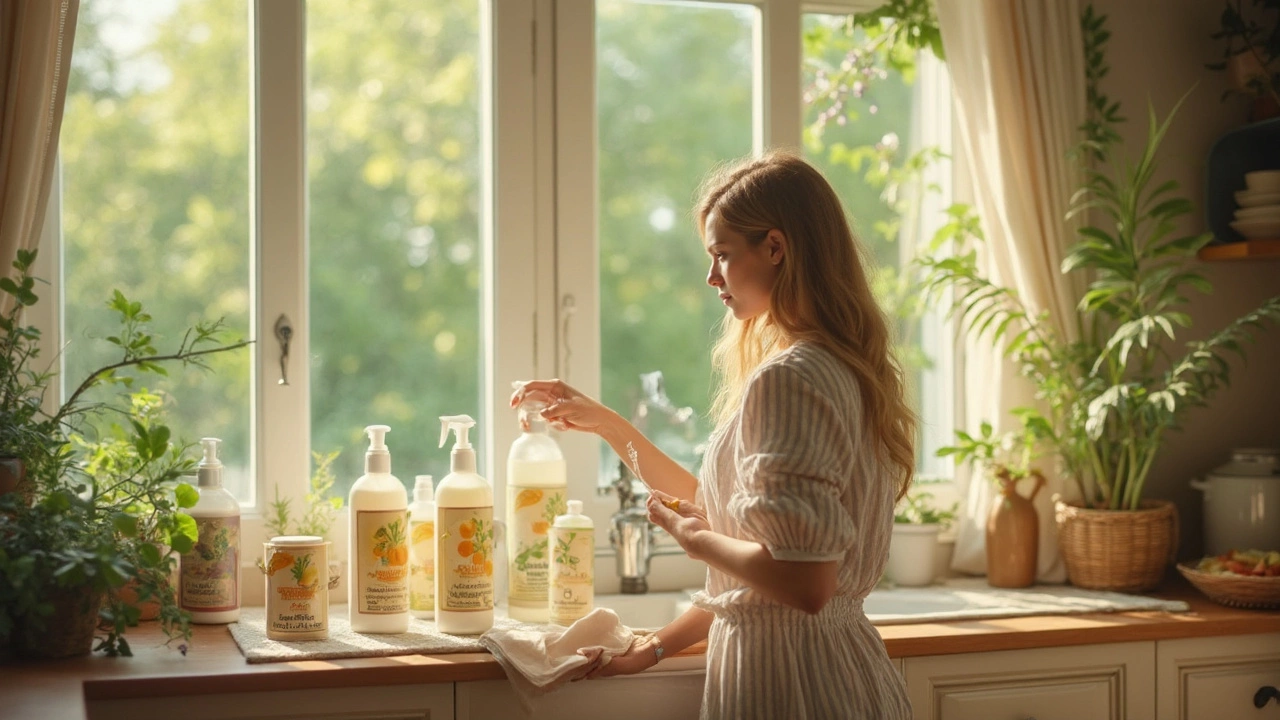Chemicals in Cleaning – What Works and What Doesn’t
When you hear the word “chemicals” you might think of harsh fumes or dangerous lab stuff. In reality most of the cleaning power in your house comes from simple chemicals you already have in the pantry. Knowing what each one does helps you clean better and keeps you safe.
Common Household Chemicals
**Baking soda** is a mild alkaline powder. It lifts odors, breaks down light stains, and works well on mattresses, carpets, and fridge shelves. Just sprinkle, let sit, then vacuum or wipe away. Vinegar is an acid that cuts grease and mineral deposits. Mix it with water for windows, oven doors, and tile floors. The smell disappears when it dries.
Hydrogen peroxide is a bleaching agent that kills germs without harsh bleach. Use a 3% solution on bathroom tiles, grout, or to freshen white fabrics. It turns into water and oxygen, so there’s no lingering chemical smell.
Enzymatic cleaners contain natural enzymes that break down proteins, fats, and urine crystals. They are the go‑to for pet stains, urine smells on mattresses, and food spills on carpets. The enzymes stay active for a while, so you don’t have to scrub repeatedly.
Tips for Using Chemicals Safely
1. Read the label – even “natural” products can hurt if you mix the wrong ones. Never combine bleach with vinegar or ammonia; the reaction creates toxic gases.
2. Dilute correctly – most cleaning tasks need only a small amount of concentrate. Too strong a mix can damage surfaces and irritate skin.
3. Ventilate – open windows or run a fan when you use any chemical, even those that smell mild. Fresh air clears fumes quickly.
4. Wear gloves if you’re handling anything that stays on the skin for a while, like hydrogen peroxide or enzyme solutions.
5. Store safely – keep all cleaning chemicals out of reach of children and pets. A locked cupboard works best.
If you’re not comfortable mixing your own solutions, professional cleaners use commercial-grade chemicals that are stronger but applied safely. Fortis Cleaning Solutions, for example, chooses eco‑friendly products that get the job done without harsh residues.
Finally, remember that the best chemical is the one you use the right way. A little baking soda on a mattress can neutralise urine smell, while a spray of vinegar can make glass sparkle without a single harsh solvent. By understanding what each chemical does, you can pick the right tool for the job, keep your home fresh, and avoid unnecessary risks.
So next time you reach for a bottle, think about the chemistry behind it. Simple, safe, and effective – that’s the sweet spot for everyday cleaning.

Eco-Friendly Chemicals: The Clean Choice for a Greener Home
Discover the essentials of eco-friendly chemicals and their role in creating a safer environment for your home. Learn about common ingredients, benefits, and find practical tips on incorporating them into your cleaning routine. Understand their importance in reducing ecological footprints. Dive into how they differ from traditional chemicals and the positive impact on health and nature.
Read More